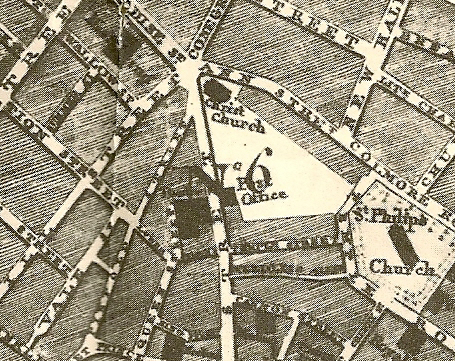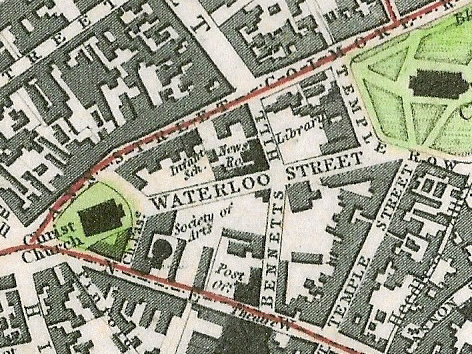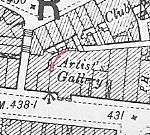Aidan
master brummie
I’m interested in the Rotunda building that was built in Birmingham to house the Panorama - canvases that were painted in the round and carefully lit and staged to give “a total immersive experience”. I think they were the IMAX or 3D entertainment of their day and why I think the Birmingham one deserves to be better known and understood.
I have done a search and can find no similar thread on the Forum so hope this isn’t duplicating anything - don’t want to get another slap from Alf :headhit:
I haven’t been able to find much online and what I have found relates mostly to the first Panorama in London after Robert Barker (Irish artist living in Scotland) patented the idea in 1787 and perfected the necessary methods of representing perspective, although these do give an excellent background eg:
• the first Panorama painting of Edinburgh
• Book - The Panorama by Bernard Comment
• NY Uni Media Archaeology
• History of Panoramic Image creation
• And good old Wikipedia
But what of the Birmingham Panorama? There are a couple of books that are either out of print or not online – so am just picking clues from the titles, which suggest that:
• it was situated towards the top end of New Street
• may have been a permanent structure (ie brick/stone rather than wood)
• Was quite early in date ie c1804
• But seemed to cease fairly early c1817 when panoramas in London certainly seemed to develop and become more popular over the C19th (ie become moving images and really the forerunner to modern media)
• May have been initiated and run by the inventor or his family
I am indebted to Rupert on another thread for sharing the wonderful image showing the Panorama centre stage in 1821 (obviously still around then)
What I am hoping the Forum can provide is answers to the following questions (and more…):
• Confirmation of dates (building and destruction)?
• Why was it wrapped up so soon & what happened to it?
• Structure & decoration – was it wood?
• People involved (was it the Barkers?)
• Images shown – assuming one a year or so there should be 10-20 that were shown
• Location – can we firmly pinpoint it in the modern landscape?
• Are there any other examples of it shown in paintings, sketches, maps, etc?
I have done a search and can find no similar thread on the Forum so hope this isn’t duplicating anything - don’t want to get another slap from Alf :headhit:
I haven’t been able to find much online and what I have found relates mostly to the first Panorama in London after Robert Barker (Irish artist living in Scotland) patented the idea in 1787 and perfected the necessary methods of representing perspective, although these do give an excellent background eg:
• the first Panorama painting of Edinburgh
• Book - The Panorama by Bernard Comment
• NY Uni Media Archaeology
• History of Panoramic Image creation
• And good old Wikipedia
But what of the Birmingham Panorama? There are a couple of books that are either out of print or not online – so am just picking clues from the titles, which suggest that:
• it was situated towards the top end of New Street
• may have been a permanent structure (ie brick/stone rather than wood)
• Was quite early in date ie c1804
• But seemed to cease fairly early c1817 when panoramas in London certainly seemed to develop and become more popular over the C19th (ie become moving images and really the forerunner to modern media)
• May have been initiated and run by the inventor or his family
I am indebted to Rupert on another thread for sharing the wonderful image showing the Panorama centre stage in 1821 (obviously still around then)
What I am hoping the Forum can provide is answers to the following questions (and more…):
• Confirmation of dates (building and destruction)?
• Why was it wrapped up so soon & what happened to it?
• Structure & decoration – was it wood?
• People involved (was it the Barkers?)
• Images shown – assuming one a year or so there should be 10-20 that were shown
• Location – can we firmly pinpoint it in the modern landscape?
• Are there any other examples of it shown in paintings, sketches, maps, etc?



